Image Credit:
File ID 46072456 | © Rawpixelimages | Dreamstime.com

For today’s healthcare providers, deciding between Google Ads and Facebook Ads isn’t about choosing one over the other—it’s about understanding how each serves a different stage of the patient journey. Both platforms offer immense potential for digital marketing for dentists and doctors, but they also come with distinct challenges that private practices must navigate carefully.
It’s a common misconception that Google Ads only reach people actively searching for services. In reality, Google’s ecosystem extends far beyond keyword-driven search campaigns. Through the Display Network, Performance Max, and Discovery Ads, Google connects with users as they browse news sites, watch YouTube videos, or check their Gmail promotions tab.
For healthcare marketers, this means the ability to reach not only patients ready to book but also those who may not yet realize they need your services. For example:
This multichannel approach provides a wider audience reach than search ads alone, offering a balanced mix of patient acquisition and long-term brand awareness for healthcare practices.
Facebook and Instagram remain invaluable for connecting with patients based on life stage, interests, and community. Parents—especially mothers—frequently use these platforms to find recommendations for pediatric care, orthodontics, or family dentistry. A pediatric dental practice can effectively reach families by targeting parents within specific age ranges, zip codes, or parenting interest groups.
Similarly, newer platforms such as TikTok have become powerful tools for reaching younger audiences. Practices focused on mental health, aesthetics, or lifestyle medicine often find success using short-form video to connect authentically with viewers seeking relatable advice or inspiration. For example, therapists or wellness coaches leveraging social media marketing can build trust through educational and conversational content.
Each social platform serves unique demographic strengths:
In healthcare marketing, a “conversion” typically refers to a qualified lead—such as a phone call, website form submission, or live chat inquiry—that can become an appointment. This measurement is often the baseline for evaluating marketing success because, while advertising generates leads, converting those leads into patients requires an efficient front-desk process.
Research shows that many healthcare offices lose 27%–43% of inbound calls before they become scheduled appointments—most often due to call-handling issues or lack of follow-up. By contrast, top-performing practices answer 94% of calls and book about 85% of new-patient inquiries (CallRail, 2023). These numbers highlight how vital consistent training and scripting are—especially when handling questions about insurance, pricing, or availability. Even a single poorly managed call can cause a potential patient to look elsewhere.
On the financial side, acquisition costs vary by specialty but have risen notably post-COVID. According to First Page Sage (2024), the average cost to acquire a new dental patient through marketing is approximately $374 per patient. Broader healthcare benchmarks from Artisan Growth Strategies (2024) show patient acquisition costs ranging from $250 to $1,400, depending on specialty—roughly $247 for primary care, $520 for cardiology, and $1,435 for plastic surgery. Supporting analysis from First Page Sage also lists average acquisition costs of $412 for Allergy/Immunology, $441 for Dermatology, and $277 for Family Practice.
Transitioning to Organic Visibility: The Role of SEO
While paid advertising can deliver immediate results, organic search remains the foundation of sustainable patient acquisition.
When examining digital performance metrics, studies show that organic search converts roughly 2.7% of visits into leads (Ruler Analytics, 2025). In practical terms, a healthcare website receiving around 400 visits per month can expect approximately 10 qualified inquiries, assuming the site is properly optimized and tracked.
Typical monthly website traffic varies by specialty, size, and marketing maturity:
Across all healthcare categories, only 1%–3% of total visitors may ultimately convert into booked appointments, depending on response times and follow-up. Conversion rates rise substantially when Google Ads or Meta Ads supplement SEO, since paid traffic tends to carry stronger purchase intent and creates additional patient touchpoints.
These figures underscore a key truth: long-term marketing success depends not only on generating traffic but also on how effectively each lead is handled once they engage.
Google Pay-Per-Click (PPC) Advertising
Paid search remains one of the most effective lead-generation tools in healthcare because it targets patients actively searching for care. Across the industry, benchmark reports indicate that cost-per-lead (CPL) is typically under $100 for most practices (Promodo, 2024).
Facebook and Instagram (Meta) Advertising
Meta’s advertising platforms—Facebook and Instagram—are powerful for generating awareness, building community, and driving inquiries. Unlike Google Ads, which capture patients already searching, Meta campaigns create demand by engaging potential patients earlier in their decision process through visuals, testimonials, and educational content.
Across healthcare, benchmark studies show that CPL on Meta ranges from $40 to $120, depending on audience targeting, ad quality, and form type (LocaliQ, 2024; Promodo, 2024). Campaigns using Lead Forms, where users submit contact info directly within Facebook, often yield higher submission volume but require immediate follow-up to maintain lead quality.
When executed well—with prompt follow-up, compelling creative, and clear calls to action—Meta advertising can achieve a cost per booked patient that rivals Google PPC, especially when paired with SEO and retargeting strategies.
Choosing between Google Ads and Meta advertising depends on your practice goals, services, and budget. Google Ads attract higher-intent leads—patients actively searching for treatment—making them ideal for practices focused on measurable growth or high-value procedures. Meta Ads, on the other hand, excel in brand awareness, community engagement, and retention, reaching families and potential patients before they begin searching.
For example, a pediatric dental practice may invest $300–$500 per month in a simple Meta campaign to combat natural attrition and remain top-of-mind with parents—often resulting in 2–6 new patient inquiries monthly. Meanwhile, a general or specialty practice aiming to drive significant patient growth might commit $2,000–$5,000 monthly to Google Ads, generating 30–50 qualified leads, depending on competitiveness.
The strongest digital strategies blend both: using Meta Ads to build familiarity and re-engage past visitors, while Google Ads capture ready-to-book patients. Supported by strong SEO, responsive staff, and ongoing reputation management, this multichannel mix delivers the best long-term ROI for healthcare practices of any size.
While the opportunities are immense, healthcare marketing faces strict compliance requirements. Advertising must follow guidelines set by the FDA, FTC, and HIPAA, as well as platform-specific policies. Certain treatments, medications, and procedures cannot be promoted or must use approved language only.
A reputable healthcare marketing partner ensures every campaign meets these legal and ethical standards while still achieving strong results. Common challenges include:
Ignoring these standards can lead to disapprovals, account suspensions, or even fines—underscoring the importance of professional oversight.
When managed correctly, both Google and Meta Ads can generate consistent patient growth. The most effective healthcare marketing campaigns often combine:
For practices investing in digital marketing for dentists or doctors, the key is synergy. Google provides precision and high intent, while social platforms foster connection, trust, and recall.
With guidance from a trusted healthcare marketing partner, your practice can navigate both the technical and regulatory complexities of digital advertising—ensuring compliance, maximizing ROI, and connecting authentically with the patients who need you most.

 Copyright 2021-2025
Copyright 2021-2025